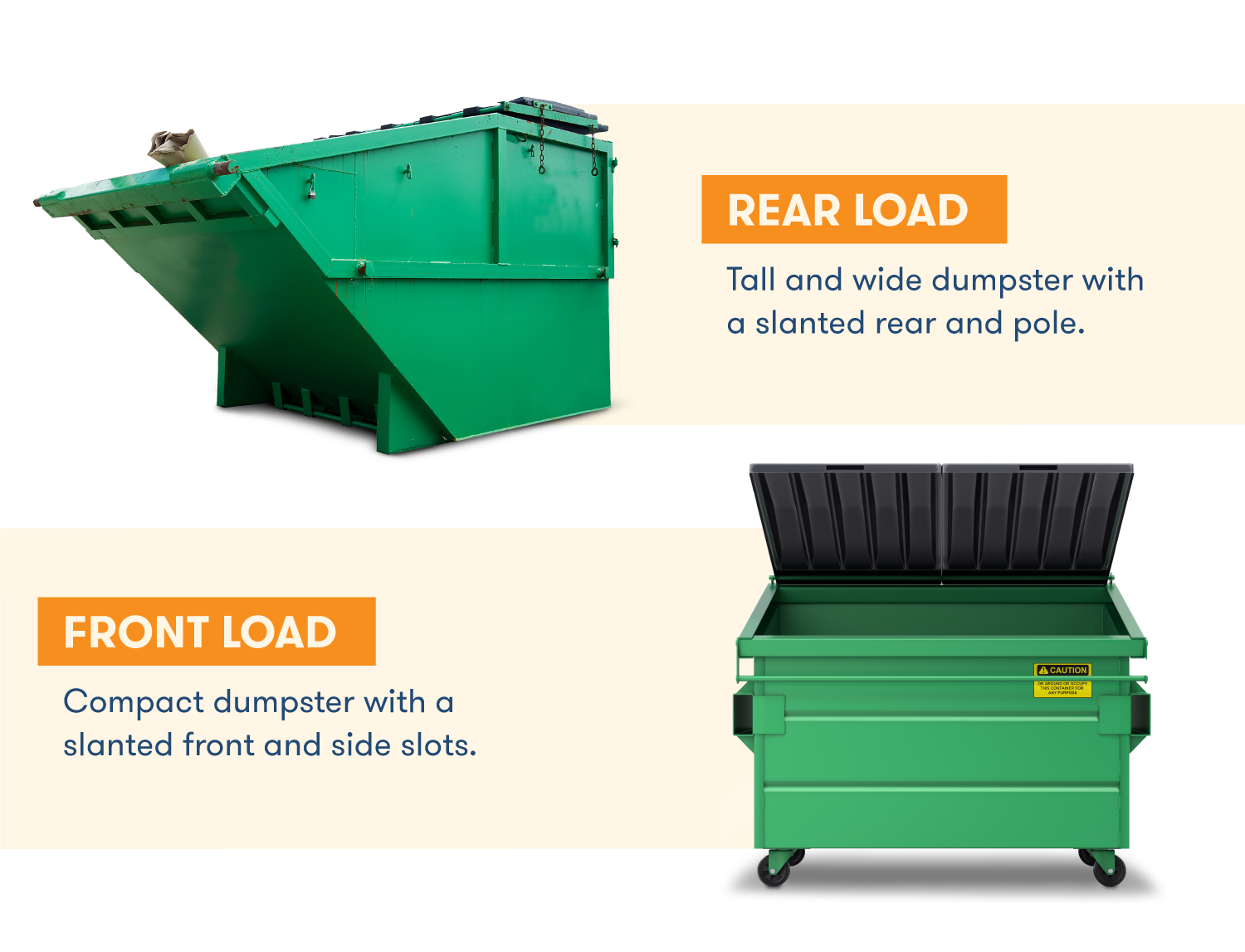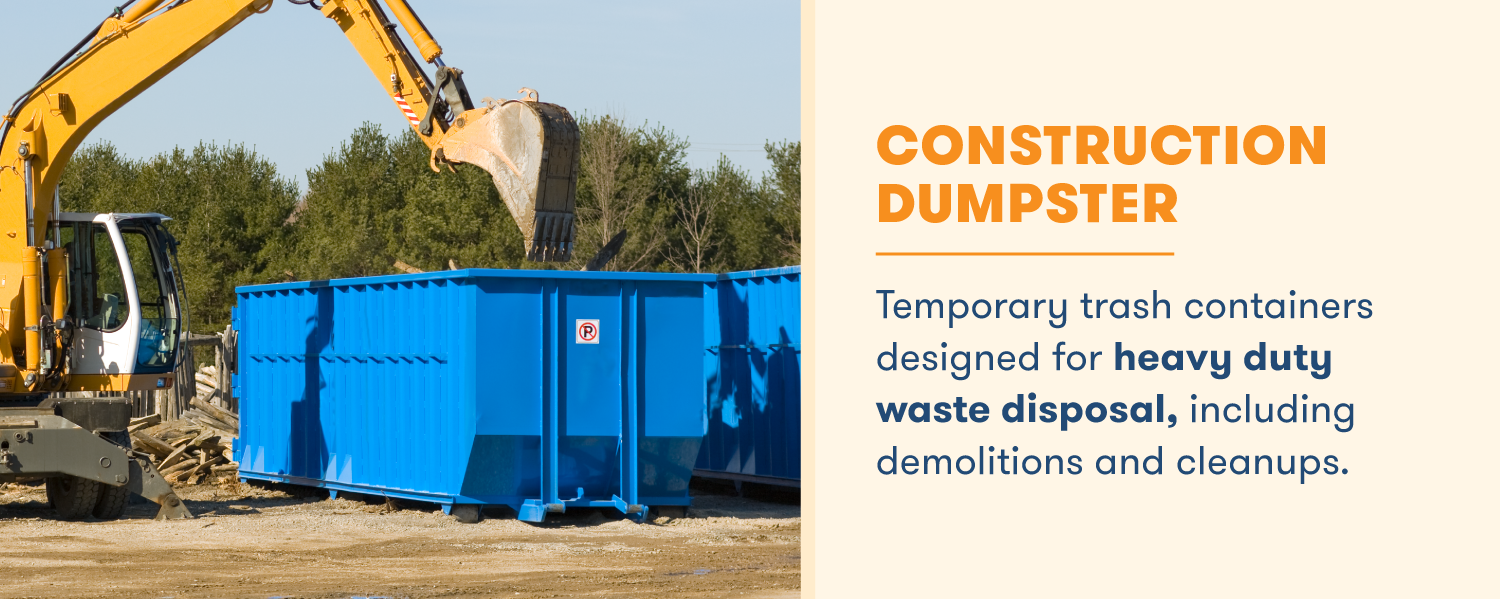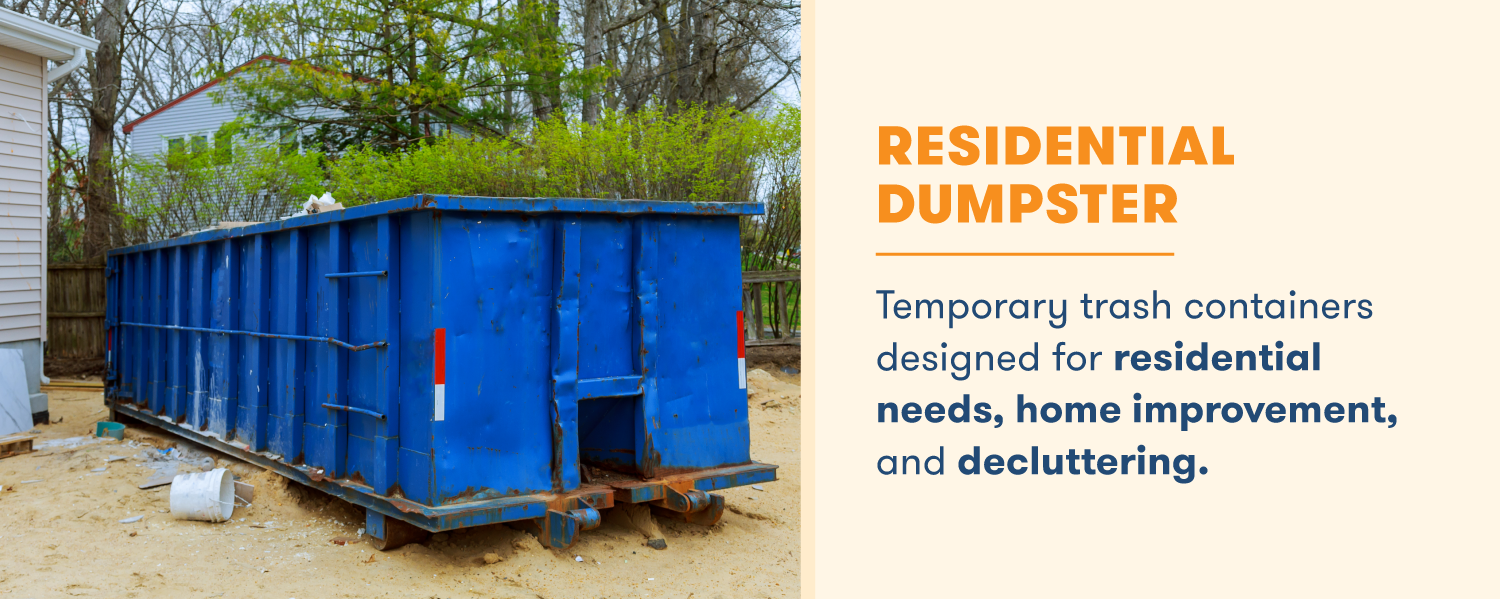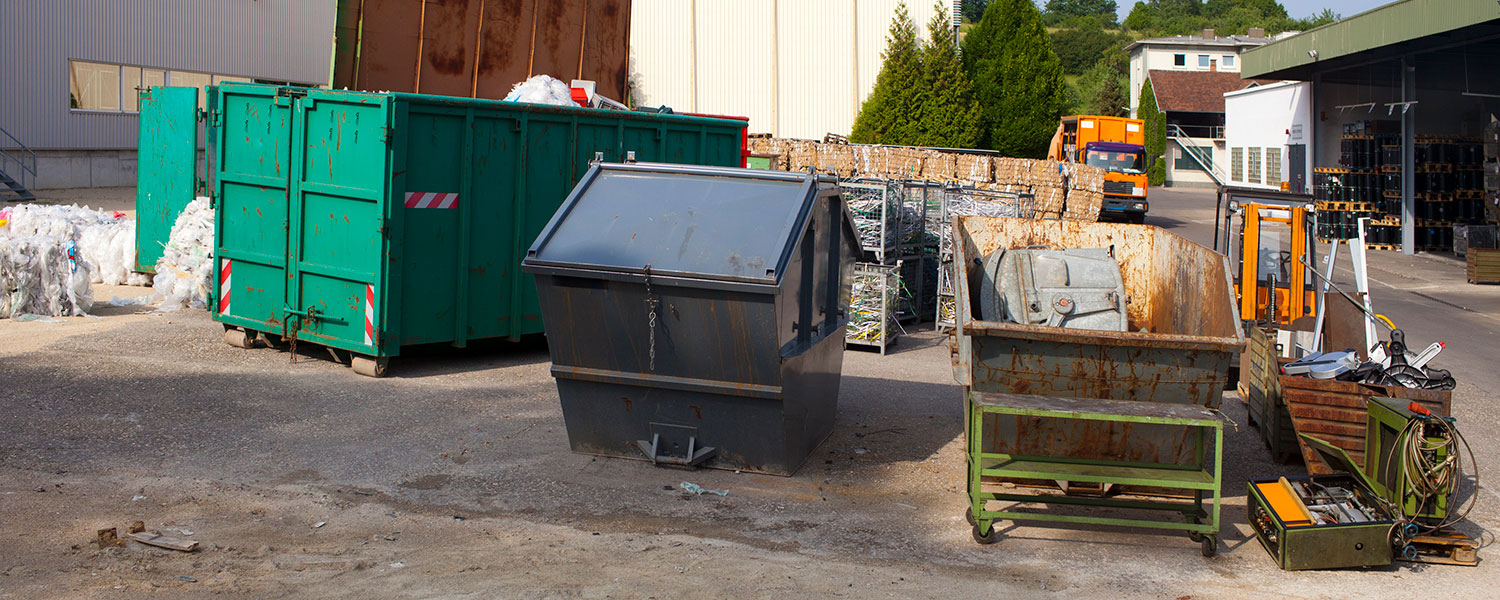Whether you’re working on a large construction project or handling debris from a home renovation, the final step is to dispose of the waste. Even everyday businesses require a dedicated method of removing waste from their site.
Due to their size and mobility, dumpsters provide a convenient and safe way to discard debris before they it reaches a landfill. When it comes to the dumpster type, you have several options that vary by how they load, the debris they carry, and how they are transported.

Our guide covers the most common types of dumpsters and which one is best for you to rent based on your disposal needs.
Commercial Dumpster
Commercial dumpsters are the common containers you usually spot at places such as restaurants, gas stations, and parking lots. These dumpsters are generally rented on a permanent basis and have regularly scheduled pickups where dump trucks haul the trash and debris away.

A commercial dumpster typically has a lid that helps reduce odors, repel pests, and keep out environmental elements. There are two categories of commercial dumpsters.
Front Load Dumpster
As the name suggests, a front load dumpster is loaded into a truck from the front. It generally has a top that slants downward to allow trash to be dropped in. The container also has slots on each side designed for a dump truck to insert its prongs and lift the dumpster overhead.
Providing two to eight cubic yard capacities, front load dumpsters are a convenient solution for daily waste, as their compact design and slanted front allow waste to be easily deposited.
Rear Load Dumpster
A rear load dumpster, on the other hand, has a slanted back and extending poles. Its contents are dumped into a truck using a hinge and winch system. As opposed to an overhead movement, the truck manually hooks on to the rear load dumpster and then pulls the dumpster upwards for the waste to fall in.
Due to the rear slant, it is a bit more difficult to dump waste into rear load dumpsters. However, they can typically hold more trash and their taller design can fit into narrow spaces.

Construction Dumpster
A construction dumpster is the most common container seen on construction job sites. These large, open-topped dumpsters can serve multiple purposes and are typically rented by companies on a temporary basis.
Construction dumpsters are also known as roll-off dumpsters due to wheels on the bottom that help haul the containers away. Offering between 10 and 40 cubic yard capacities, they are an ideal solution for a wide range of cleanup projects, including building remodeling, demolitions, roof tear-offs, and disposing of yard waste.
There are also construction dumpsters designed for specific uses. A dirt dumpster handles yard debris and soil compound removal, while certain dumpsters are designed for handling clean concrete, brick, and asphalt.

Residential Dumpster
Residential dumpsters are similar to construction dumpsters but are employed for specific home projects, such as exterior and interior renovations, household decluttering, junk removal, and flooring removal. Like construction dumpsters, they are a temporary rental solution and are hauled away once full.
Residential dumpsters range in storage capacities, from small “low boy” 10-yard containers for dirt debris to larger driveway-safe residential dumpster trailers.

How to Choose the Right Dumpster Size for Your Project
While the type of dumpster is important to consider when renting, you’ll also want to consider the size. Measured in cubic yards, dumpster sizes are available in a wide variety of capacities for different projects. Choosing the best size will depend on the amount of debris and the nature of your project.
Sometimes, the dumpster type will dictate the size. Commercial dumpsters, for example, are typically available in two to eight cubic yard capacities, while construction dumpsters can offer up to 40 cubic yards of storage. For a breakdown of the different dumpster capacities, check out our dumpster size comparison guide.

Because of their storage capacity and maneuverability, dumpsters are truly the superheroes of waste disposal. If you’re looking for a reliable trash disposal option, BigRentz offers dumpster rental on a selection of commercial, residential, and dirt-only dumpsters.
Explore All Dumpsters
